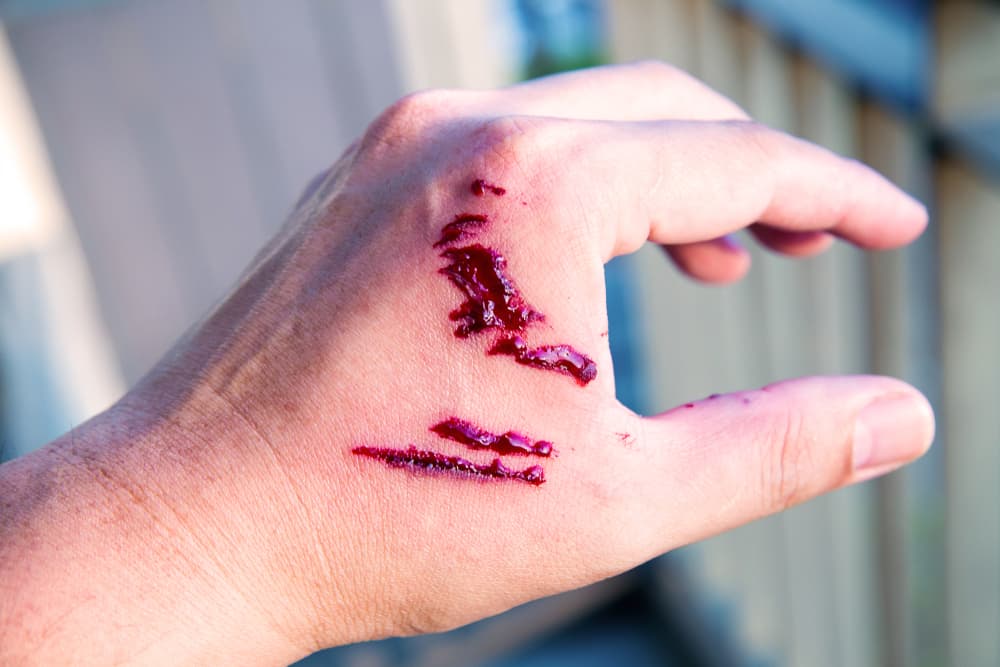Dog bites and attacks can lead to debilitating injuries like deep lacerations, puncture wounds, and broken bones. In many cases, these attacks happen when dog owners fail to restrain their pets or let them roam around at large.
You may be entitled to recover compensation if you suffered injuries in a recent dog attack. An experienced dog bite lawyer in Atlanta can file a claim under the dog owner's homeowner policy and pursue the compensation you need for your injuries. Alternatively, your lawyer can pursue litigation in the state court system.
Where do Dog Attack Incidents Usually Happen?

Dog attack incidents can occur in various locations, and the frequency often depends upon factors like the environment, human activities, and the presence of dogs. While it's challenging to pinpoint specific locations universally, some settings are more commonly associated with dog attacks, including:
- Residential Areas – In residential neighborhoods, dogs often attack when they roam freely without proper control. Encounters with unleashed or poorly supervised dogs can lead to incidents, especially if the dog's territorial instincts come into play.
- Parks and Recreational Areas – Parks and recreational spaces also attract dog owners for exercise and socialization. Off-leash dogs, crowded areas, and unfamiliar interactions can increase the risk of dog attacks in these spaces. Vigilance is crucial when multiple dogs are present in public spaces.
- Mail and Package Delivery Routes – Postal workers and delivery personnel often risk dog attacks during their routes. The presence of unfamiliar individuals near a dog's territory can trigger protective behaviors, causing the dog to bite or attack.
- Jogging or Running Trails – Joggers and runners may encounter dogs on trails. Dogs, even well-behaved ones, can become protective or territorial during exercise, leading to potential conflicts between joggers and canines.
- School Zones – Dog attacks can also occur in areas around schools, particularly during drop-off and pick-up times. The combination of children, parents, and dogs nearby may lead to incidents if dog owners do not adequately control their dogs.
- Construction Sites – Construction sites sometimes have guard dogs or resident dogs belonging to workers. Poorly secured construction sites can lead to encounters between these dogs and individuals passing by.
- Residential Entrances – Entrances to homes or properties can be common locations for dog attacks, especially when owners fail to control their dogs properly with fences or leashes; visitors and neighbors may encounter potential risks, or delivery personnel may be at risk in these areas.
- Dog Parks – While designed for dog socialization, dog parks can sometimes be settings for aggressive behavior. Interactions between unfamiliar dogs or inadequate supervision can result in conflicts between a dog and a human.
- Veterinary Clinics and Animal Shelters – Surprisingly, dog attacks can happen in places dedicated to animal care. Dogs may feel stressed or threatened in unfamiliar environments like veterinary clinics or animal shelters, potentially leading to aggressive behavior between a dog and a person.
- Rural Areas and Farms – In rural settings or on farms, encounters with working dogs or dogs protecting livestock may pose a serious risk to humans. Visitors or passersby may not be aware of the presence of such dogs, leading to potential incidents.
If you suffered injuries in a dog attack in one of these locations, a knowledgeable dog bite lawyer in your area can meet with you to discuss the Incident and your legal options.
What are the Most Common Dog Attack Injuries?
Dog attacks can result in a range of injuries, and the severity often depends upon several factors, including the size and breed of the dog, the victim's age and health, and the circumstances surrounding the attack.
One of the most common types of injuries in dog attacks is puncture wounds. Dog bites can penetrate the skin, leading to deep punctures that may cause infection and scarring. Larger breeds or dogs with powerful jaws can inflict more substantial puncture wounds, potentially damaging muscles, nerves, or even bones.
Soft tissue injuries are also prevalent in dog attacks. These injuries include bruising, contusions, and lacerations. The force of a dog's bite can crush or tear soft tissues, resulting in significant pain and potential complications for the victim.
Facial injuries are also a particular concern, especially in attacks involving children. Dogs may target the victim's face and head, causing injuries to the eyes, nose, mouth, and surrounding areas. Facial injuries can be disfiguring and may require extensive medical intervention and reconstructive surgery to correct.
Fractures are another common outcome of dog attacks. The effect of a dog bite or knockdown can lead to broken bones, particularly in the limbs or hands, as victims attempt to shield themselves from the attack. Fractures may necessitate surgical intervention and prolonged rehabilitation.
Infections can also follow dog bites due to bacteria in a dog's mouth. Even seemingly minor bites can introduce harmful bacteria into the victim's bloodstream, leading to infections that may require one or more antibiotic treatments. Prompt medical treatment is necessary to prevent the risk of infection.
Psychological and emotional trauma is another all-too-common consequence of dog attacks. Victims may develop post-traumatic stress disorder (PTSD), anxiety, or a longstanding fear of dogs. Emotional trauma can also affect the victim's daily life, relationships, and overall well-being.
In some instances, dog attacks can result in fatal injuries, especially if the victim is an elderly individual or small child. Severe blood loss, head injury, or complications from infections may contribute to tragic outcomes for these individuals.
It's important to recognize that the aftermath of a dog attack involves not only physical injuries but also emotional and psychological consequences. Seeking prompt medical attention, reporting the Incident promptly, and consulting with legal professionals are essential steps for victims to address the multifaceted effect of dog attacks.
What is the Value of a Dog Attack Case?
Determining the value of a dog attack case involves assessing various factors that influence the extent of damages that the victim suffered. The case value is contingent upon economic and non-economic factors, aiming to compensate the victim for their losses and provide a fair resolution.
Victims may receive compensation either through settlement or litigation. Litigation usually becomes necessary if the insurance company denies fault for the Incident or refuses to compensate the victim fairly. The amount that a victim can settle or sue for depends upon various components, including:
- Related Medical Expenses – One significant component of the value of a dog attack case is the medical expenses that the victim incurred. This includes costs related to emergency medical care, surgeries, hospitalization, rehabilitation, and anticipated medical expenses. The severity and extent of injuries directly affect this valuation.
- Lost Income– If the victim cannot work due to injuries sustained in the dog attack, the value of the case considers lost income. This includes the income the victim might have earned during the recovery period, and any future income lost due to long-term or permanent disabilities.
- Property Damage – In cases where the victim's personal property is damaged, such as (clothing or accessories) during the attack, the repair or replacement cost contributes to the case's overall value.
- Pain and Suffering – Non-economic damages, such as pain and suffering, are integral to determining the case's ultimate value. This subjective component considers the physical pain, emotional distress, and overall suffering that the victim experienced as a direct result of the dog attack.
- Emotional Distress – The psychological effects of a dog attack can be substantial, leading to emotional distress. Compensation for emotional distress aims to address the mental anguish, anxiety, and trauma that the victim endured.
- Loss of Consortium – Additional damages may be available if the victim experiences a loss of companionship, support, or the ability to maintain a normal familial relationship due to the injuries they sustained in the dog attack.
- Scarring and Disfigurement – If the dog attack results in visible scarring or disfigurement, the case's value increases to account for the effect on the victim's appearance and potential psychological consequences.
Insurance coverage is a crucial factor in assessing the potential recovery. The liable party's homeowner's insurance or other applicable policies may significantly cover the damages.
Ultimately, the value of a dog attack case is unique to each situation, and a thorough evaluation of both economic and non-economic factors is essential. Seeking legal counsel from an experienced personal injury attorney can help dog attack victims navigate the complexities of assessing and pursuing fair and just compensation for the harm they have suffered.
Proving a Dog Attack Case
Proving a dog attack case requires careful gathering and presenting evidence to establish liability and damages. The "negligence" rule governs dog attacks, holding owners responsible for not exercising reasonable care in controlling their dog. Here's a guide on how to prove a dog attack case:

- Document the Incident – Begin by documenting the Incident as thoroughly as possible. Take photographs of the scene, the dog, and any visible injuries. If there were witnesses, obtain their contact information.
- Seek Prompt, Ongoing Medical Attention for Your Injuries – Promptly seek medical attention for any injuries you sustained during the dog attack. Medical records and reports will be crucial evidence linking the injuries to the Incident.
- Identify the Dog Owner – Determine the identity of the dog owner. This may involve obtaining information from witnesses, neighbors, or local authorities. Identifying the owner is crucial for establishing liability.
- Verify Vaccination Records – Determine whether the dog was up-to-date on vaccinations. If the dog has a history of aggression or has attacked others, it can strengthen the case against the dog owner.
- Report the Incident Promptly – Report the dog attack to local animal control or law enforcement. This creates an official record of the Incident and may aid in subsequent legal proceedings.
- Gather Witness Statements – Collect statements from witnesses who observed the dog attack. Their accounts can provide additional perspectives and strengthen your case.
- Retain All Medical Records – Keep all medical bills, records, and receipts for treating injuries resulting from the dog attack. This documentation is essential for calculating damages.
- Consult Professionals – If necessary, a dog bite lawyer may consult different professionals, such as dog behaviorists or veterinarians, who can provide insights into the dog's propensity for aggression or the owner's negligence.
- Establish the Legal Elements of Negligence – Demonstrate negligence by showing that the dog owner failed to exercise reasonable care in controlling their dog despite knowing it posed a risk of harm.
- Document Non-Economic Damages – Document non-economic damages such as pain and suffering, emotional distress, and any effect on quality of life. This may involve providing testimony from mental health professionals.
By meticulously collecting evidence, establishing negligence, and seeking legal guidance, you can enhance your chances of proving your dog bite case and obtaining fair compensation for the damages you suffered.
Effectively Litigating a Dog Attack Case
Litigating a dog attack case in Georgia involves navigating legal processes and presenting a compelling case to establish liability and seek compensation for damages. Some of the most important steps in the process include:
- Consultation with an experienced dog bite attorney
- Filing a Complaint in the court system
- Accomplishing service of process on the dog owner
- Taking part in discovery, including interrogatories, document requests, and depositions, to gather facts and assess the strength of each party's claims.
- Taking part in mediation or settlement negotiations to try and resolve the case out of court
- Participating in a bench or jury trial becomes necessary if the case does not settle out of court
Effective communication with your attorney, adherence to legal procedures, and presenting a strong case are essential throughout the litigation process. Legal representation is crucial to navigating the complexities of litigating a dog attack case, and an experienced attorney can advocate for your rights and seek fair compensation for the damages you have suffered.
Call a Dog Attack Lawyer in Your Area Today
If you sustained injuries in a recent dog attack, you must immediately consult an experienced personal injury attorney in your area. Your lawyer can explore your available legal options for pursuing settlement or litigation compensation and take the necessary steps to recover the full damages you deserve.
Schedule a Free Initial Consultation Today!




























